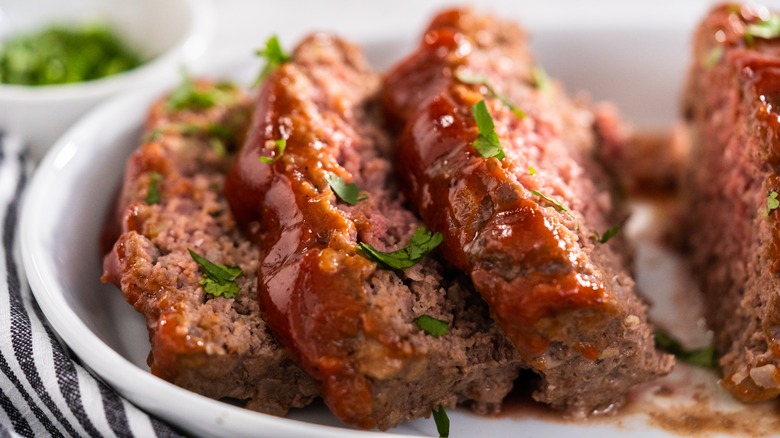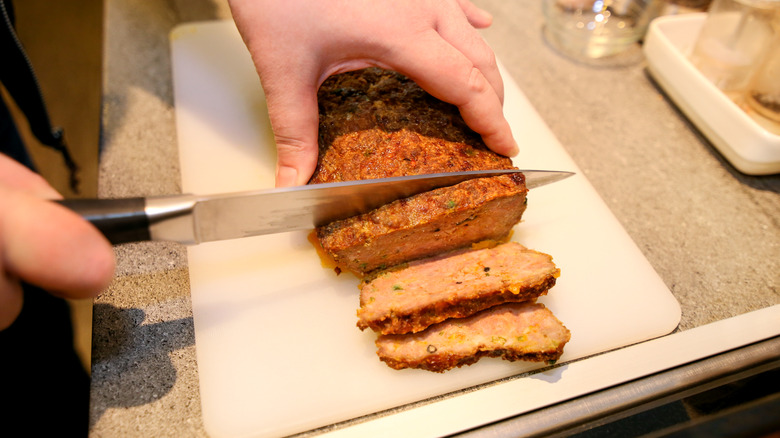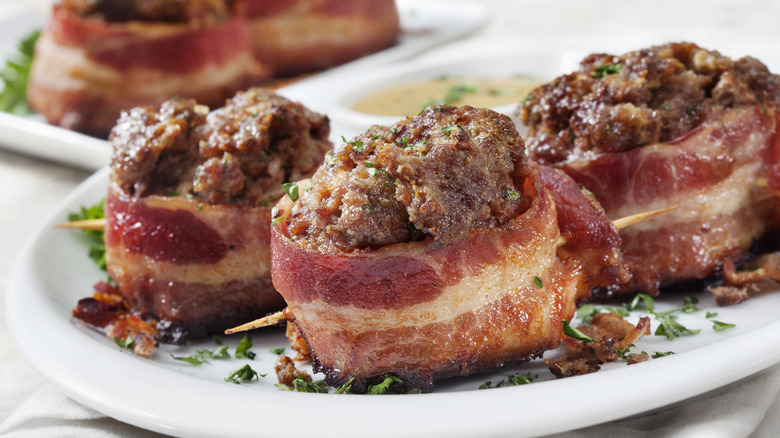How Meatloaf Became America's Favorite Dinner
America is a melting pot of cultures, and what we eat reflects that. Popular dinners include tacos, pizza, cheeseburgers, and spaghetti, but for a good portion of the 20th century, meatloaf was in the meal rotation of many families. This isn't to say that it has gone out of style; on the contrary, meatloaf remains a tasty dish that can even occasionally be spotted on upscale restaurant menus. Many consider the heyday of meatloaf to be the 1950s; in the 1958 cookbook, "365 Ways to Cook Hamburger," there were 70 recipes for meatloaf alone.
How did such a humble meal, made of a little meat and a lot of breadcrumbs, achieve such stardom? Essentially, the love affair began during the Great Depression. With the sudden collapse of the American banking system and the increase in unemployment, certain ingredients like meat became scarce and expensive. Meatloaf presented an ingenious way to stretch what little protein many families could afford into a filling meal.
While the country was still recovering from this event, the onset of World War II again limited the availability of meat. Families, once more, embraced meatloaf for its affordability and ability to feed many mouths with one loaf pan. By the time the 1950s rolled around, meatloaf had solidified itself as a favorite dish among the Greatest Generation, who then fed it to their Baby Boomer children. Such was its appeal that you could hardly walk into a roadside diner without seeing meatloaf as the Blue Plate Special.
Meatloaf wasn't an invention of the Great Depression
The first recipe resembling the meatloaf we know today was written in the 1870s, and included instructions to finely chop any type of cold meat and mix it with spices, milk-soaked bread, and eggs. There was also a recipe in the late 19th-century cookbook, "Boston Cooking-School Cook Book," for a dish prepared using ground veal, breadcrumbs, and eggs. But food historians believe that the concept of meatloaf has been in existence since the fifth century, when medieval Europeans would dine on a dish made of diced meat scraps combined with fruit, nuts, and spices.
You can see the idea of combining meat bits with other ingredients to make unique foods in things like French terrines and rillettes, Danish forloren hare, Chinese steamed pork cakes, Pennsylvania Dutch scrapple, and Lebanese kibbeh. Aside from bread and egg, 20th-century Depression-era and wartime meatloaf might have included precious meat mixed with ingredients like oats, evaporated milk, and dried cereals to create a filling and nutritious main course.
Dozens of ways to make a meatloaf dinner
As times of scarcity shifted to times of plenty, meatloaf also evolved. Home cooks increasingly had access to a variety of affordable meat options, and today, meatloaves are often made with a mix of ingredients like beef, veal, and pork, although turkey, chicken, and even vegan meatloaf mixes are popular. Moisture and filling no longer come solely from excess breadcrumbs or crackers; people enhance the meat mix with vegetables, cheeses, and sauces to create flavor and interest.
Meatloaves have been made in muffin tins to create charming individual portions, they're glazed with homemade tomato relishes and chutneys, and people upgrade homemade meatloaf with ingredients like cognac, caramelized onions, and bacon. Indeed, this nostalgic and comforting dish has never been more versatile.
Perhaps its staying power is tied to meatloaf being a symbol of resilience and an emblem of perseverance through challenging times, but any way you look at it, meatloaf is comfort, it's history, and a literal slice of history.



